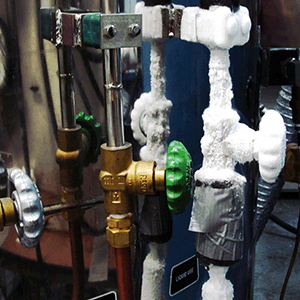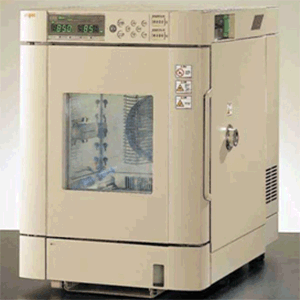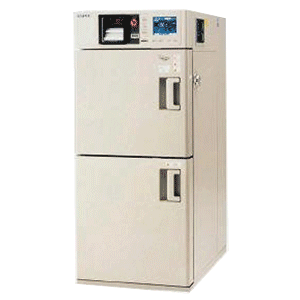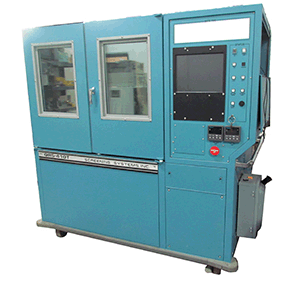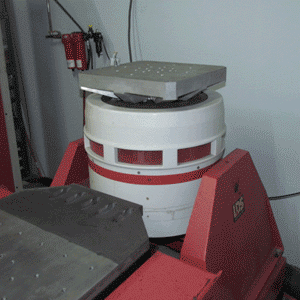
Environmental Testing Services
- Accelerated Aging - HALT/HASS, Environmental Chambers, Vibration
- Autoclave - Environmental Chambers
- Chemical Resistance - Environmental Testing Applications
- Combined Environment - Environmental Chambers
- Conductive Anodic Filament Growth (CAF) - Environmental Testing Applications
- Corrosion Resistance - Environmental Testing Applications
- Drop Shock Testing - Shock Testing
- Electromigration - Environmental Testing Applications
- Environmental Stress Screening - HALT/HASS
- Field Simulation - Environmental Testing Applications
- High Temperature Storage - Environmental Chambers
- High Temperature Operating Life - Environmental Chambers
- Highly Accelerated Life Testing (HALT) - HALT/HASS
- Highly Accelerated Stress Audit (HASA) - HALT/HASS
- Highly Accelerated Stress Screening (HASS) - HALT/HASS
- Hydrolytic Stability - Environmental Testing Applications
- Impact Shock Testing - Shock Testing
- Multi Axis Vibration - HALT/HASS
- Low Temperature Storage - Environmental Chambers
- Low Temperature Operating Life - Environmental Chambers
- Life Testing - HALT/HASS, Environmental Chambers, Vibration
- Mechanical Shock - Shock Testing
- Moisture and Insulation Resistance (MIR) - Environmental Testing Applications
- Outgassing - Environmental Testing Applications
- Single Axis Vibration - Vibration Testing
- Temperature and Humidity - Environmental Chambers
- Thermal Aging (UL) - Environmental Chambers
- Thermal Cycling - Environmental Chambers
- Thermal Shock - Environmental Chambers
- Thermal Stress - Environmental Chambers
- Tin Whiskering - Environmental Chambers
- Environmental Testing Related Standards
Environmental Chamber Testing
An environmental chamber is an enclosure used to test the effects of specified environmental conditions on industrial products, materials, and electronic devices. The chambers can provide constant temperature exposure, variable temperature exposure at various thermal ramp rates and humidity from 15% to 95%. Such a chamber can be used as a stand-alone test for environmental effects on test specimens, as preparation of test specimens for further physical tests or chemical tests. Chamber testing parameters can be selected for qualification testing where product failures are usually cause for rejection or chamber parameters can be selected for reliability testing. During reliability testing, products are stressed beyond use temperature to eventually precipitate failure from which product design improvement opportunities are exposed. Testing products to fail is also a mechanism to quantitatively measure reliability growth across an evolving or multi-generational product portfolio.
Applications:
- Accelerated Aging
- Autoclave
- Combined Environment
- High Temperature Operating life
- High Temperature Storage
- Life Testing
- Low Temperature Operating life
- Low Temperature Storage
- Temperature and Humidity
- Thermal Aging (UL)
- Thermal Cycling
- Thermal Shock
- Thermal Stress
- Tin Whiskering Precipitation
- Lead-Free Quality and Reliability Testing
- Reliability and Durability Testing
Highly Accelerated Life Testing/Stress Screeing (HALT/HASS)
A highly accelerated life test (HALT) is a stress testing methodology for rapid product reliability assessment. HALT testing is currently in use by most major engineering organizations to improve product reliability in a variety of industries and is performed during the product design and early manufacturing cycles. Environmental stresses are applied in a testing procedure which eventually reaches levels significantly beyond those expected during use and eventually cause failure. The determination of product operating limits and destruct limits allow greater levels of operating margin to be designed into a product which leads to fewer field reliability failures (lower Weibull hazard rate). Temperature cycling and repetitive shock, power margining and power cycling are the most common forms of failure acceleration for electronic equipment. Using extensive product monitoring of internal signals and temperatures, AES can provide quantitative performance data over the simple and less valuable pass/fail attribute data. Any HALT lab can take a product to failure but Accolade is one of the few HALT facilities that has extensive failure analysis capability to analyze HALT failures and deliver root cause data and corrective action recommendations. Without root cause and corrective action, reliability growth as a byproduct of HALT will not be achieved. HALT chambers are characterized by wide temperature range and fast thermal rates concurrent 3-axis, 3 rotations (roll, pitch and yaw) to achieve 6 degree of freedom (6dof) random vibration. The HALT chambers at AES, using patented QRS vibration technology, provide exceptional low frequency performance when compared to repetitive shock (RS) type HALT chambers. To learn more about the two dominant HALT chamber vibration technologies and their associated performance differences, refer to the paper "Differences Between QRS and RS Type Vibration Systems" in the technical forum page
Applications:
- Life Testing
- Lead-Free Quality and Reliability Testing
- Reliability and Durability Testing
- Accelerated Aging
- Environmental Stress Screening
- Highly Accelerated Life Testing (HALT)
- Highly Accelerated Stress Screening (HASS)
- Highly Accelerated Stress Audit (HASA)
Shock Testing
A mechanical or physical shock is a sudden acceleration or deceleration caused primarily by impact or drop. Impact shock interaction can be characterized by the peak acceleration, the duration and the shape of the shock pulse (half sine, sawtooth, triangular, trapezoidal, etc.). The shock magnitude can reach levels of several thousand G's and sub-millisecond durations depending on the testing protocol. Impact shock testing is performed by attaching a product to a table which is raised and accelerated toward a reaction mass where well defined shock pulse shape, magnitudes and durations are selected for the product. For lower magnitude shock testing (less than 75G's) an electrodynamic shaker can be used. The electrodynamic shaker platform allows easier realization of sawtooth, triangular and trapazoidal shock pulse shapes. The test sample may have accelerometers attached to record the shock response spectrum or strain gauges to evaluate distortion of selected structures in or on a sample. During drop shock testing, an individual sample or a boxed sample is dropped at selected drop heights onto hard (steel) or semi-rigid (wooden) surfaces and is typically used for transportation testing.
Applications:
- Product Qualification
- Product Reliability Assessment
- Shock Response Studies
- Transportation Testing (ISTA 1A or ISTA 3A)
Vibration Testing
Vibration testing is accomplished by introducing a forcing function into a structure, usually with an electrodynamic or hydraulic shaker. Vibration testing is performed to examine the response of a device under test to a defined vibration environment. The measured response may be fatigue life, resonant frequencies or simulation of real world environments for product qualification. For relatively low frequency and high displacement forcing, servohydraulic shakers are used. For higher frequency and lower displacement forcing electrodynamic shakers are used. The most common profiles of vibration testing services conducted by vibration test labs are Sine, Swept Sine and Random. Sine tests are performed to survey the structural response of the device under test. A random test is generally considered to more closely replicate a real world environment such as road inputs to a moving automobile.
Applications:
- Product Qualification
- Product Reliability Assessment
- Product Resonance Search
- Transportation Testing (ISTA 1A or ISTA 3A)
Environmental Testing Applications
Accolade Engineering Solutions offers a variety of environmental testing applications services. Contact us today to discuss your testing needs with someone who can provide you with the expert knowledge to determine the right testing solution for you. .
Applications:
- Chemical Resistance
- Conductive Anodic Filament Growth (CAF)
- Corrosion Resistance
- Electromigration
- Field Simulation
- Hydrolytic Stability
- Moisture and Insulation Resistance (MIR)
- Outgassing
- And More...
Environmental Testing Related Standards
- ASTM D3045 "Standard Practice for Heat Aging of Plastics Without Load"
- ASTM D543 "Standard Practices for Evaluating the Resistance of Plastics to Chemical Reagents"
- ASTM D570 "Standard Test Method for Water Absorption of Plastics"
- ASTM E595 "Standard Test Method for Total Mass Loss and Collected Volatile Condensable Materials from Outgassing in a Vacuum Environment"
- ASTM E96 "Standard Test Methods for Water Vapor Transmission of Materials"
- GMW3172 "General Specification for Electrical/Electronic Component Analytical/Development/Validation (A/D/V) Procedures for Conformance to Vehicle Environmental, Reliability, and Performance Requirements"
- EIA-364-17 "Temperature Life with or without Electrical Load Test Procedure for Electrical Connectors and Sockets"
- EIA-364-28 "Vibration Test Procedure for Electrical Connectors and Sockets"
- EIA-364-31 "Humidity Test Procedure for Electrical Connectors and Sockets"
- EIA-364-32 "Thermal Shock (Temperature Cycling) Test Procedure for Electrical Connectors and Sockets"
- IEC 60068-2-1 "Cold"
- IEC 60068-2-2 "Dry Heat"
- IEC 60068-2-14 "Change of Temperature"
- IEC 60068-2-27 "Shock"
- IEC 60068-2-38 "Temperature Humidity, Cyclic"
- IEC 60068-2-64 "Random Vibration"
- IPC-TM-650, Method 2.4.13.1 "Thermal Stress of Laminate"
- IPC-TM-650, Method 2.6.11 "Hydrolytic Stability Solder Mask"
- IPC-TM-650, Method 2.6.14.1 "Electrochemical Migration Resistance Test"
- IPC-TM-650, Method 2.6.14D "Resistance to Electrochemical Migration, Solder Mask"
- IPC-TM-650, Method 2.6.17 "Hydrolitic Stability, Flexible Printed Wiring Material"
- IPC-TM-650, Method 2.6.2.1A "Water Absorption, Metal Clad Plastic Laminates"
- IPC-TM-650, Method 2.6.25 "Conductive Anodic Filament (CAF) Resistance Test: X-Y Axis"
- IPC-TM-650, Method 2.6.3 "Moisture and Insulation Resistance, Printed Boards"
- IPC-TM-650, Method 2.6.3.1 "Solder Mask - Moisture and Insulation Resistance"
- IPC-TM-650, Method 2.6.3.2 "Insulation and Moisture Resistance, Flexible Base Dielectric"
- IPC-TM-650, Method 2.6.3.3B "Surface Insulation Resistance, Fluxes"
- IPC-TM-650, Method 2.6.3.4 "Moisture and Insulation Resistance – Conformal Coating"
- IPC-TM-650, Method 2.6.3.5 "Bare Board Cleanliness by Surface Insulation Resistance"
- IPC-TM-650, Method 2.6.3.7 "Surface Insulation Resistance"
- IPC-TM-650, Method 2.6.3F "Moisture and Insulation Resistance, Printed Boards"
- IPC-TM-650, Method 2.6.4 "Outgassing, Printed Boards"
- IPC-TM-650, Method 2.6.6B "Temperature Cycling, Printed Wiring Board"
- IPC-TM-650, Method 2.6.7 "Thermal Shock and Continuity, Printed Board"
- IPC-TM-650, Method 2.6.7.1 "Thermal Shock - Conformal Coating"
- IPC-TM-650, Method 2.6.7.2B "Thermal Shock, Continuity and Microsection, Printed Board"
- IPC-TM-650, Method 2.6.7.3 "Thermal Shock - Solder Mask"
- IPC-TM-650, Method 2.6.7A "Thermal Shock and Continuity, Printed Board"
- IPC-TM-650, Method 2.6.8 "Thermal Stress, Plated-Through Holes"
- IPC-TM-650, Method 2.6.8.1 "Thermal Stress, Laminate"
- IPC-TM-650, Method 2.6.8E "Thermal Stress, Plated Through-Holes"
- JESD22-A100 "Cycled Temperature-Humidity-Bias Life Test"
- JESD22-A101 "Steady State Temperature Humidity Bias Life Test"
- JESD22-A102 "Accelerated Moisture Resistance - Unbiased Autoclave"
- JESD22-A103 "High Temperature Storage Life"
- JESD22-A104 "Temperature Cycling"
- JESD22-A106 "Thermal Shock"
- JESD22-A108 "Temperature, Bias and Operating Life"
- JESD22-A110 "Highly-Accelerated Temperature and Humidity Stress Test (HAST)"
- JESD22-A113 "Preconditioning of Nonhermetic Surface Mount Devices Prior to Reliability Testing"
- JESD22-A118 "Accelerated Moisture Resistance - Unbiased Hast"
- JESD22-A120 "Test Method for the Measurement of Moisture Diffusivity and Water Solubility in Organic Materials used in Integrated Circuits"
- JESD22-B103 "Vibration, Variable Frequency"
- JESD22-B104 "Mechanical Shock"
- JESD22-B110 "Subassembly Mechanical Shock"
- JESD201 "Environmental Acceptance Requirements for Tin Whisker Susceptibility of Tin and Tin Alloy Surface Finished"
- JESD22-A121 "Measuring Whisker Growth on Tin and Tin Alloy Surface Finishes"
- MIL-STD-202 Method 103B "Humidity (steady state)"
- MIL-STD-202 Method 104A "Immersion"
- MIL-STD-202 Method 106G "Moisture resistance"
- MIL-STD-202 Method 107G "Thermal shock"
- MIL-STD-202 Method 108A "Life (at elevated ambient temperature)"
- MIL-STD-202 Method 201A "Vibration"
- MIL-STD-202 Method 203C "Random drop"
- MIL-STD-202 Method 204D "Vibration, high frequency"
- MIL-STD-202 Method 212A "Acceleration"
- MIL-STD-202 Method 213B "Shock (specified pulse)"
- MIL-STD-202 Method 214A "Random vibration"
- MIL-STD-750 "Standard Test Methods for Semiconductor Devices"
- MIL-STD-810 Method 501.5 "High Temperature"
- MIL-STD-810 Method 502.5 "Low Temperature"
- MIL-STD-810 Method 503.5 "Temperature Shock"
- MIL-STD-810 Method 507.5 " Humidity"
- MIL-STD-810 Method 514.6 "Vibration"
- MIL-STD-810 Method 516.6 "Shock"
- MIL-STD-883 Method 1004.7 "Moisture resistance"
- MIL-STD-883 Method 1005.8 "Steady state life"
- MIL-STD-883 Method 1006 " Intermittent life"
- MIL-STD-883 Method 1008.2 "Stabilization bake"
- MIL-STD-883 Method 1010.7 "Temperature cycling"
- MIL-STD-883 Method 1011.9 "Thermal shock"
- MIL-STD-883 Method 1012.1 "Thermal characteristics"
- MIL-STD-883 Method 1015.9 "Burn-in test"
- MIL-STD-883 Method 2002.3 "Mechanical shock"
- MIL-STD-883 Method 2005.2 "Vibration fatigue"
- MIL-STD-883 Method 2007.2 "Vibration, variable frequency"
- MIL-STD-883 Method 2026 "Random vibration"
- RTCA/DO-160D "Environmental Conditions and Test Procedures for Airborne Equipment"
Copyright (c) 2014 accoladeeng.com. All rights reserved. | Design by FreeCSSTemplates.org.

